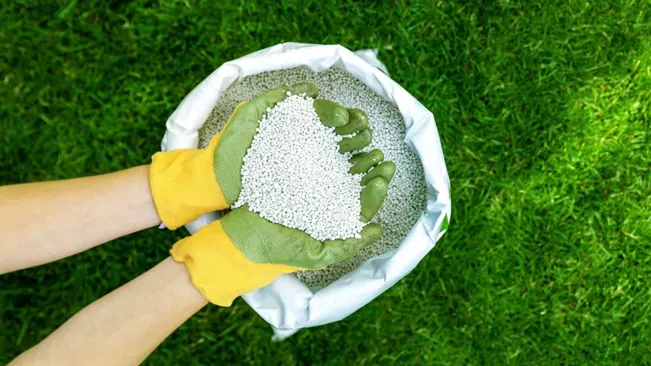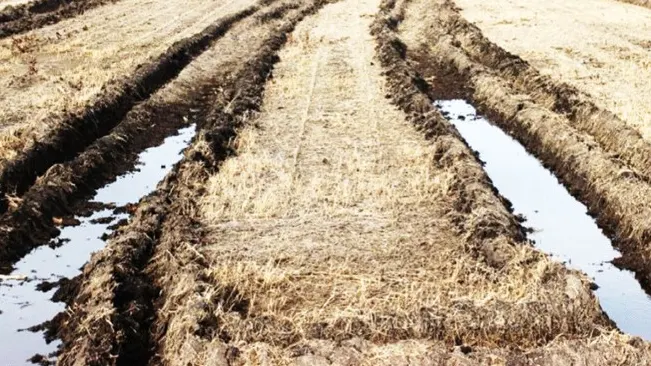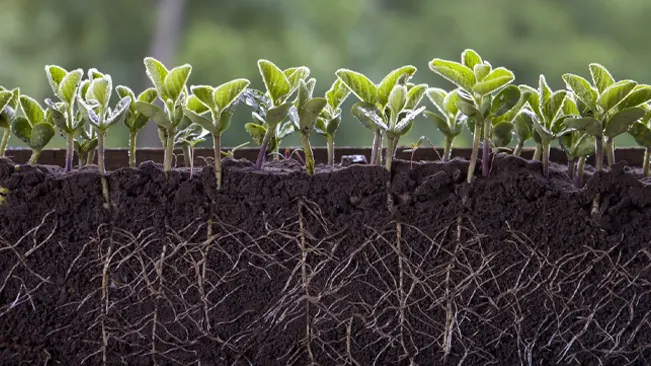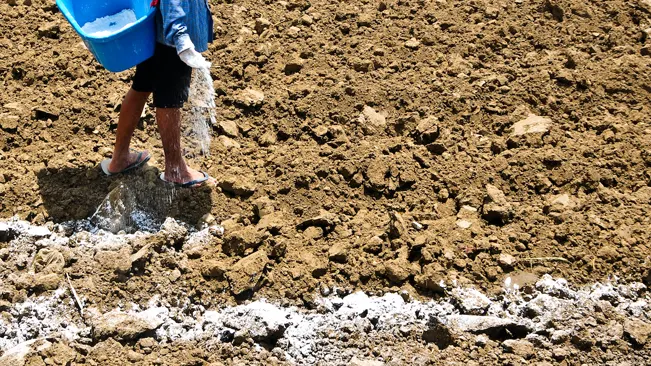Is Gypsum Good for Lawns? What You Need to Know
- March 4, 2024
- 0 comment
Gypsum, a naturally occurring mineral composed of calcium sulfate dihydrate, has long been recognized for its valuable properties as a soil amendment. Its ability to improve soil structure, particularly in heavy clay soils, makes it a popular choice for gardeners and landscapers looking to enhance the health and appearance of their lawns. By breaking down compacted soil, gypsum increases water penetration and aeration, which are crucial for root development and the overall vigor of lawn grass.
What is Gypsum?
Gypsum is a soft sulfate mineral composed primarily of calcium sulfate dihydrate, with the chemical formula CaSO₄·2H₂O. It is widely found in nature and is used in various industrial and agricultural applications. Gypsum is mined from sedimentary rock formations around the world and is used in the manufacture of products such as plasterboard (drywall), cement, and fertilizers. In its pure form, gypsum is white, but it can also be found in shades of gray, yellow, pink, or brown, depending on the impurities present. Gypsum has a variety of unique properties, such as its ability to harden when mixed with water, which makes it a valuable material in construction, especially for making drywall and plastering surfaces. It is also used to create molds for pottery and in the dental industry for making dental casts.

In agriculture, gypsum serves as a soil amendment to improve soil structure, particularly in clay and heavy soils. It helps to loosen compacted soil, thereby enhancing water penetration and aeration, which can lead to healthier plant growth. Gypsum is also used to add calcium and sulfur, essential nutrients for plant growth, without altering the soil’s pH level. This makes it particularly useful in areas where the soil is deficient in these nutrients or where pH balance is not a concern.
What Does Gypsum Do For Lawns?
- Improves Soil Structure: Gypsum is especially beneficial for heavy, clay-like soils. It helps to break up compacted soil, making it more friable and easier for roots to penetrate. Improved soil structure enhances the soil’s ability to retain air and water, which are crucial for root development.
- Enhances Water Penetration: By improving soil structure, gypsum increases the soil’s permeability. This means water can penetrate more deeply and evenly, reducing surface water runoff and ensuring that moisture reaches the roots where it’s most needed.
- Reduces Soil Compaction: Compacted soil can significantly restrict root growth and water infiltration. Gypsum helps to reduce soil compaction, allowing roots to expand more freely and absorb more nutrients and water.
- Adds Essential Nutrients: Gypsum provides two very important nutrients to the soil: calcium and sulfur. Calcium is vital for maintaining chemical balance in the soil, reduces salt levels, and improves water penetration. Sulfur is a key element in plant growth, helping to produce vitamins, amino acids, and enzymes.
- Does Not Affect Soil pH: Unlike lime, which is also used to improve soil structure, gypsum does not alter the soil’s pH. This makes it safe to use on lawns that do not require pH adjustment.
- Helps Repair Salt Damage: In areas where de-icing salts are used during the winter, or in soils with naturally high sodium content, gypsum can help to flush out the excess salt, protecting the lawn from salt damage.
- Enhances Root Growth: The overall improvement in soil structure, nutrient availability, and moisture penetration encourages deeper and healthier root growth, leading to a more resilient and vibrant lawn.
The Role of Gypsum in Lawn Care
Ameliorating Heavy Clay Soils

Clay soils are known for their fine texture and tendency to compact. This compaction can severely limit the movement of air and water through the soil profile. Gypsum helps to break up these compacted clay particles, creating larger aggregates that improve the soil’s structure. This structural improvement enhances the soil’s porosity, making it easier for roots to grow and access the nutrients they need.
Mitigating Soil Compaction

Compacted soils can suffocate lawn roots and restrict water infiltration, leading to poor lawn health and increased runoff. Gypsum’s ability to increase soil aggregation means that compacted soils become looser and less dense, allowing roots to penetrate more deeply and water to percolate more effectively through the soil.
Enhancing Air Movement

Healthy soil requires adequate air exchange to supply oxygen to plant roots and facilitate the removal of carbon dioxide and other gases. By improving soil structure, gypsum indirectly boosts the movement of air within the soil. This enhanced aeration is crucial for root respiration and overall plant health.
Improving Water Penetration

In soils with high sodium content, the dispersion of soil particles can lead to poor water infiltration and drainage. Gypsum helps to displace sodium ions on the soil particles’ exchange sites with calcium ions from the gypsum. This displacement leads to the flocculation (or aggregation) of soil particles, which in turn improves water penetration and reduces surface crusting and runoff. The improved water infiltration ensures that lawns receive the moisture they need, even in soils previously hostile to water movement.
Practical Tips for Gypsum Application
Using a Broadcast Spreader for Even Gypsum Distribution
- Choose the Right Spreader: For gypsum application, a broadcast spreader is ideal because it disperses the product evenly over a wide area. Make sure your spreader is in good working condition and properly calibrated.
- Calibrate Your Spreader: Before applying gypsum, calibrate your spreader according to the manufacturer’s instructions. This ensures that you’re spreading the gypsum at the recommended rate, avoiding waste and ensuring that your lawn receives the right amount of product.
- Fill the Spreader on a Hard Surface: Load your spreader with gypsum while it’s on a hard surface (like a driveway) to make cleanup easier in case of spills. Avoid filling it on the lawn to prevent concentrated spots of gypsum that could affect grass growth.
- Apply Evenly: Walk at a steady pace and use a consistent pattern when applying gypsum to your lawn. Overlapping slightly on each pass can help prevent missed areas or stripes. Avoid spreading on windy days to ensure the gypsum doesn’t drift off target.
- Clean the Spreader After Use: Gypsum can clump and harden, especially in damp conditions, so it’s important to clean your spreader thoroughly after use. This prevents clogging and ensures it’s ready for the next use.
Importance of Following Product-Specific Application Instructions
- Read the Label: Before applying gypsum, carefully read the product label for specific instructions, application rates, and any safety precautions. The recommended application rate can vary depending on the product formulation and your lawn’s specific needs.
- Soil Testing: Consider conducting a soil test before applying gypsum. This will help you understand your soil’s current condition and whether gypsum will be beneficial. The test results can also guide the application rate.
- Timing: The best times to apply gypsum are in the spring and fall when the lawn is actively growing. This allows the gypsum to integrate into the soil and benefit the lawn during its peak growth periods.
- Watering In: After applying gypsum, water your lawn lightly if rain isn’t expected soon. This helps the gypsum start to dissolve and begin working in the soil.
- Record Keeping: Keep a record of your gypsum applications, including dates and amounts applied. This will help you monitor your lawn’s response over time and adjust your lawn care practices as needed.
Common Misconceptions about Gypsum
Gypsum, composed of calcium sulfate dihydrate (CaSO₄·2H₂O), provides calcium and sulfur to the soil without affecting its pH. This is because the sulfate in gypsum is already in a soluble form, readily available to plants without undergoing chemical reactions that would alter the soil’s acidity or alkalinity. In contrast, elemental sulfur, often used to lower soil pH in alkaline soils, must undergo microbial conversion to sulfuric acid before it can affect pH levels. This process can take time and depends on various soil conditions, including moisture and microbial activity.

Understanding the difference between the soluble sulfate in gypsum and elemental sulfur is crucial for managing soil health effectively. Gypsum’s role is to improve soil structure and provide essential nutrients, whereas elemental sulfur’s primary function is to adjust soil pH. By clarifying these distinctions, we can better appreciate gypsum’s value in lawn care, particularly in enhancing soil physical properties without the concern of inadvertently altering soil pH.
Pros and Cons of Gypsum
Pros
- Improves Soil Structure: Gypsum is particularly beneficial for heavy clay soils, where it helps to break up compacted soil, reducing soil compaction and creating a more porous soil structure that allows roots to grow more easily.
- Enhances Water Penetration: By improving soil structure, gypsum enhances water penetration and drainage, preventing waterlogging and making water more accessible to plant roots.
- Supplies Essential Nutrients: Gypsum provides two essential nutrients to the soil: calcium and sulfur. Calcium is crucial for cell wall development in plants, and sulfur is important for protein synthesis and enzyme activity.
- Non-Alkaline Amendment: Unlike lime, gypsum does not alter soil pH because it is neutral in pH. This makes it suitable for use in soils that do not require pH adjustment.
- Remediates Sodic Soils: In soils with high sodium content, gypsum can help displace the sodium, allowing it to be leached away, thereby reducing soil salinity and improving soil health.
- Environmentally Friendly: Gypsum is a natural mineral that is safe for the environment, pets, and humans, making it an eco-friendly choice for lawn care.
Cons
- Limited Benefit in Non-Clay Soils: Gypsum’s soil-improving benefits are most pronounced in heavy clay soils. In sandy or well-drained soils, its impact may be minimal or unnecessary.
- No Immediate Results: The effects of gypsum on soil structure are not immediate. It may take several applications over months or even years to see significant improvements.
- Not a Standalone Solution: Gypsum addresses specific soil issues related to structure and salinity but does not replace the need for other soil amendments like organic matter or balanced fertilizers.
- Ineffective in Acidic Soils without Lime: In acidic soils, gypsum does not raise the pH. If soil pH needs to be increased, lime would also be required, making gypsum an additional cost rather than a replacement.
- Potential Overuse Issues: Excessive use of gypsum can lead to an accumulation of calcium in the soil, which might interfere with the availability of other essential nutrients like magnesium and potassium.
- Cost and Availability: Depending on the location and the source, the cost of gypsum and its availability might be a constraint for some homeowners or gardeners.
Conclusion
In conclusion, the journey of integrating gypsum into lawn care practices showcases its potential to significantly enhance soil health and lawn vitality, particularly in areas plagued by heavy clay or high sodium content. The experiences shared, coupled with scientific insights, debunk common misconceptions about gypsum, particularly its impact on soil pH, and highlight its true benefits such as improved soil structure, increased water infiltration, and enhanced root development. It’s important to approach gypsum use with a balanced perspective, acknowledging both its advantages and limitations. Personal experiences underscore the value of patience and tailored application, revealing that while gypsum is not a cure-all, it can be a vital component of a comprehensive lawn care strategy. Embracing gypsum as part of a broader approach to soil health can lead to a more resilient, lush, and vibrant lawn, enriching our outdoor spaces and the environment at large.
FAQs
1. What is gypsum?
Gypsum is a naturally occurring mineral composed of calcium sulfate dihydrate. It’s used in agriculture and gardening to improve soil structure, particularly in heavy clay or sodic soils.
2. How does gypsum benefit lawns?
Gypsum improves soil structure by reducing compaction in heavy clay soils, enhancing water penetration and aeration. It also supplies essential nutrients like calcium and sulfur without altering the soil pH.
3. Will gypsum change my soil’s pH level?
No, gypsum does not significantly change the soil pH because it’s pH-neutral. It’s beneficial for adding calcium and sulfur to the soil without affecting its acidity or alkalinity.
4. Can gypsum be used on all soil types?
While gypsum is most beneficial for heavy clay or sodic soils, it can be used on other soil types but with varying degrees of effectiveness. It’s less beneficial for sandy or well-drained soils.
5. How often should I apply gypsum to my lawn?
The frequency of gypsum application can vary based on your soil’s condition and needs. Generally, applying gypsum once or twice a year (in the spring and fall) is sufficient for most lawns.
6. How much gypsum should I apply to my lawn?
The application rate can vary depending on the product and your soil’s specific requirements. It’s essential to follow the manufacturer’s recommendations on the product label, which typically range from 20 to 50 pounds per 1,000 square feet.
7. Can I use gypsum with other lawn treatments?
Yes, gypsum can be used in conjunction with other lawn treatments like fertilizers and lime. However, it’s important to space out these applications to avoid overwhelming your lawn with too many treatments at once.
8. How should I apply gypsum to my lawn?
Gypsum should be applied using a broadcast spreader to ensure even coverage. It’s important to calibrate your spreader according to the product’s recommended application rate for optimal results.
9. Do I need to water my lawn after applying gypsum?
Yes, it’s a good idea to water your lawn lightly after applying gypsum if rain isn’t expected soon. Watering helps the gypsum penetrate the soil and start working more quickly.
10. Are there any risks to using gypsum on my lawn?
When used as directed, gypsum is safe and beneficial for most lawns. However, overapplication can lead to excess calcium buildup in the soil, which might interfere with the availability of other essential nutrients. Always follow the recommended application rates to avoid potential issues.

Joel Cunningham
Forestry AuthorI'm Joel Cunningham, an expert in pruning and weed management with over a decade of experience. My skills are rooted in formal training and extensive practice, focusing on advanced pruning techniques and efficient weed control. I'm known for my quality work, precision, and deep understanding of plant health and soil dynamics. My contributions extend to educational initiatives where I share sustainable practices and advice, establishing myself as a reliable and authoritative figure in the gardening community.













Leave your comment